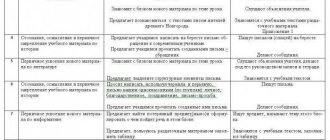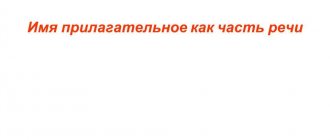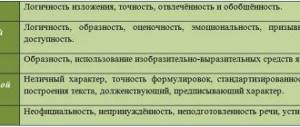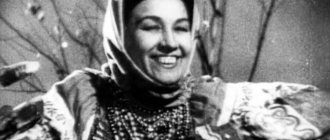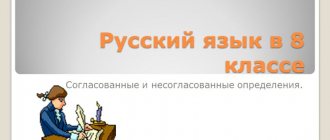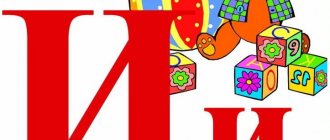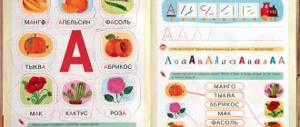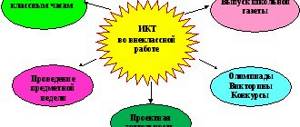Self-Analysis Requirements
The volume of self-analysis is up to 20 pages of printed text (font No. 14 with 1.5 intervals).
Title page design:
1. The full name of the institution where the teacher works is indicated at the top, followed by the full name and position held.
2. in the middle of the sheet - the name of the topic
3. at the end of the page – the year of preparation of the work.
On the second sheet is a table of contents indicating pages (pages are numbered), chapters, sections, paragraphs.
Structure of Self-Reflection:
determination of the topic that formed the basis of the work. The topic must be relevant and correspond to trends in the development of education.
Identification of the problem under study, which follows from the topic and, as it were, narrows the boundaries of the search.
The main theoretical positions, ideas that were the starting points during the experimental work and form the basis of methodological findings.
Identification of the leading ideas of one’s teaching experience, which formed the basis for improving teaching practice. Justification of them in accordance with the socio-pedagogical conditions of life of students in a given socio-cultural environment. Characteristics of the characteristics of students, their level of development at the beginning of work.
A brief description of the content of the educational area of the subject, its functions and capabilities in the development of students. Dwell on the features of the program, the features of the implementation of the basic curriculum. Novelty of approaches to teaching a field of knowledge, subject, type of activity.
Features of the chosen technology so that education and upbringing are developmental and activity-based.
Description of the system of lessons and other forms of work aimed at implementing the above ideas, paying special attention to the content, forms and methods of work that allow achieving better results in the development of students compared to existing traditional experience.
Argumentation of innovations, confirmation of them with diagnostic material (intermediate and final sections).
Analysis of the effectiveness of your teaching experience based on the correspondence of the results to the predicted goals and objectives formulated at the beginning. Conclusions should clearly define the essence of pedagogical experience, findings, innovations, their novelty, originality, and compliance with trends in the development of education.
Chapter 2. Planning and analysis of a music lesson
What does this mean?
The main prerequisites for the expressiveness of melodies are the same as the prerequisites for the expressiveness of speech intonation. The term intonation itself was used extensively by Asafiev.
If one student, for example, shows himself most clearly as a performer, then it is legitimate to demonstrate this ability to a greater extent. Sometimes you encounter the fact that a student who is fluent in the button accordion or violin comes to class without these instruments and plays only the piano, which he is less successful at.
Or a student who is good at vocals did not consider it necessary to sing a beautiful song or romance in class.
This is a big mistake, because because of this, the children saw in their new teacher a completely different musician than he really is.
Let’s not hide the important fact that is obvious: the students must like the student trainee first of all as a musician. Of course, among other things, the exact “hit” in the choice of musical material plays an important role here, which often largely determines the success of the lesson.
Analysis of a music lesson in 3rd grade on the topic.docx - Diary of a music lesson “Rimsky-Korsakov Opera The Snow Maiden”
Perception of music, preparing students to perceive new material.2.
Singing ditties.3. Playing musical instruments. (spoons, triangles, maracas, tambourines, etc.)4.
Musical and rhythmic movements.5.
Creative tasks. The following methods and forms of work were used: Methods: practical (work in pairs, groups); verbal; partially – search; control method. Forms: individual; group; collective; During the lesson, techniques were used for setting problematic tasks at different stages of the lesson, which contributed to active work. The final stage was the teacher’s summing up and evaluation of the lesson results.
This contributed to the creation of a positive psychological
Questions for preparing self-analysis by the teacher:
1. To what extent does the goal of your professional activity agree with the goals of the educational institution in which you work?
2. What important problems have you managed to solve in the period since your last certification? How are the results of problem resolution presented?
3. What is your role in the implementation of the development program of the educational institution in which you work?
4. How do you take into account the educational needs of children in your professional activities? To what extent are goals, objectives and activities aligned with the individual needs of the trainees?
5. What do you do to effectively use the time of children and yourself, as a teacher, in and outside of class? What technologies and teaching methods do you use in your teaching activities? How do they relate to the needs of the students?
6. How is interaction with the class organized in and outside of class? How is student cooperation organized in the classroom?
7. Determine the level of cognitive interest of students in your lessons? What is being done to develop interest in the subject being studied?
8. How are the educational needs of individual students with different abilities or aptitudes met?
9. What is the dynamics of student performance in the subject you teach?
10.What methods of assessing the activities of trained children do you use? How do they meet their goals? How is the information obtained from the assessment used? What is the participation of students in the assessment of their learning activities?
11. Assess the level of psychological atmosphere in the class: what measures are you taking to create an atmosphere of mutual trust, respect, and openness.
12.How do you interact with parents? How is academic achievement reported? How do you take into account the opinions of parents and their requests regarding the child’s academic performance and progress?
13.How do you assess your relationships with colleagues?
14.How do you improve your professional skills? What place does self-education play here?
15.What difficulties do you face in your professional activity? How do you overcome them? Result.
Self-analysis of a music lesson in 5th grade
Self-analysis of a music lesson in 5th grade
The topic of the lesson is “Can music express a person’s character?”
Theme of the year:
“ Music, we hear music everywhere...”
Section theme:
"
Musical Portrait".
Lesson “Can music express a person’s character?” — 1 lesson from this section according to the program of T. I. Naumenko, V. V. Aleev. Place of this lesson in the system of the specified program: 5th grade, 3rd quarter.
The program requirements for the lesson are taken into account (the lesson is presented as a system). It is linked to previous and subsequent lessons. The previous and subsequent lessons of the quarter teach us to perceive music as an integral part of every person’s life, and develop an attentive and friendly attitude towards the world around us.
Lesson content:
conveying a person’s character in images and music. A musical depiction of the external and internal appearance of a person.
Lesson type
– a lesson in learning new material.
Lesson genre
– lesson-dialogue.
Formed educational results:
1. Subject:
As a result of the lesson, students learned
- recognize the image of a musical work, a means of musical expression.
- understand the meaning of the expression “musical portrait”,
- embody the features of music in performing activities based on knowledge of the basic means of musical expression,
2. Metasubject UUD :
As a result of the lesson, students can
Cognitive UUD
:
- reflect on the impact of music on a person, its relationship with life and other forms of art.
- to understand various phenomena of the composer’s life on the basis of entering the world of his musical images, their analysis, comparison;
- find associative connections between artistic images of music and painting; analyze and compare works of music and visual art.
Regulatory UUD:
- possession of goal-setting skills in setting educational tasks,
- planning one’s own actions in the process of perceiving and performing music while identifying connections between music and fine arts, theater during the performance of musical works.
- independent determination of the expressiveness and figurativeness of Mussorgsky’s music, presentation of one’s thoughts about music.
- possession of the skills of comprehension and generalization of educational actions in the process of perception and performance of music
- formulating your own opinion and position in relation to the lesson material.
Communication UUD:
- convey your own impressions of music and painting in oral speech;
- initiate interactions in a group or team in the process of independent work with musical and artistic information;
- give self-assessment and interpretation of one’s own communicative actions in the process of perception and performance of music.
3. Personal UUD:
- understanding the interaction of arts as a means of expanding ideas about the content of musical images, their influence on the spiritual and moral development of the individual;
- understanding the vital content of classical and modern music, identifying the associative connections of music with literature, fine arts, theater in the process of mastering musical culture.
- show emotional responsiveness, a personally interested attitude towards musical and artistic works;
Lesson equipment: used during the lesson
- multimedia equipment: computer, projector, presentation,
Interdisciplinary connections were traced:
music, visual arts, literature
Methods:
- "Return" on a higher level
- Reflections on Music
- Identities and contrasts
- Content analysis of an instrumental work
- Discussion,
- Dialogue.
- Word drawing method.
, methods were used
verbal, technical, visual, method of musical-auditory analysis.
All these methods, forms and means helped to achieve the didactic task.
integration of learning in my lesson.
, which is typical for this program. The main ideas of integrative learning are:
- personal orientation of learning (People are the main value of the educational process);
- formation of generalized subject structures and methods of activity (Assimilation of knowledge based on awareness of patterns);
- priority of meaning-forming motives in learning (motivating, internal, external and organizing);
- consistency in teaching (awareness of connections within scientific theory);
- problematic learning;
- reflection of activity;
- dialogicity (truth is born in the process of dialogical communication).
The goal of integrative education: the formation of a holistic vision of the world.
There was a connection with life and aesthetic development.
Basic concepts.
Opera, song, portrait.
Lesson vocabulary:
A musical portrait is a description of the hero’s character through music
Protodeacon is a priest’s assistant during church services.
The use of ICT allows you to conduct lessons:
- at a high aesthetic and emotional level (animation, music)
- provides visibility;
- attracts a large amount of didactic material;
- increases the amount of work performed in the lesson by 1.5 - 2 times;
- provides a high degree of differentiation of learning (an individual approach to the student, using multi-level tasks).
- reducing the time for monitoring and testing students' knowledge;
- children learn control and self-control skills.
In my opinion, the psychological atmosphere
during the lesson was positive and favorable. The subject itself and the topic of the lesson push us towards this.
A music lesson is, first of all, an art lesson, a creativity lesson, where every child is given the opportunity to develop their imagination, fantasy, thinking, and form aesthetic taste. In these lessons, the individuality of each student should be revealed, and his or her own creative abilities should develop. A music lesson, perhaps like no other, provides an opportunity for the development of creative abilities.
I tried to develop an associative type of thinking and imagination in students.
I managed to implement all the assigned tasks and fully reveal the essence of the lesson topic.
